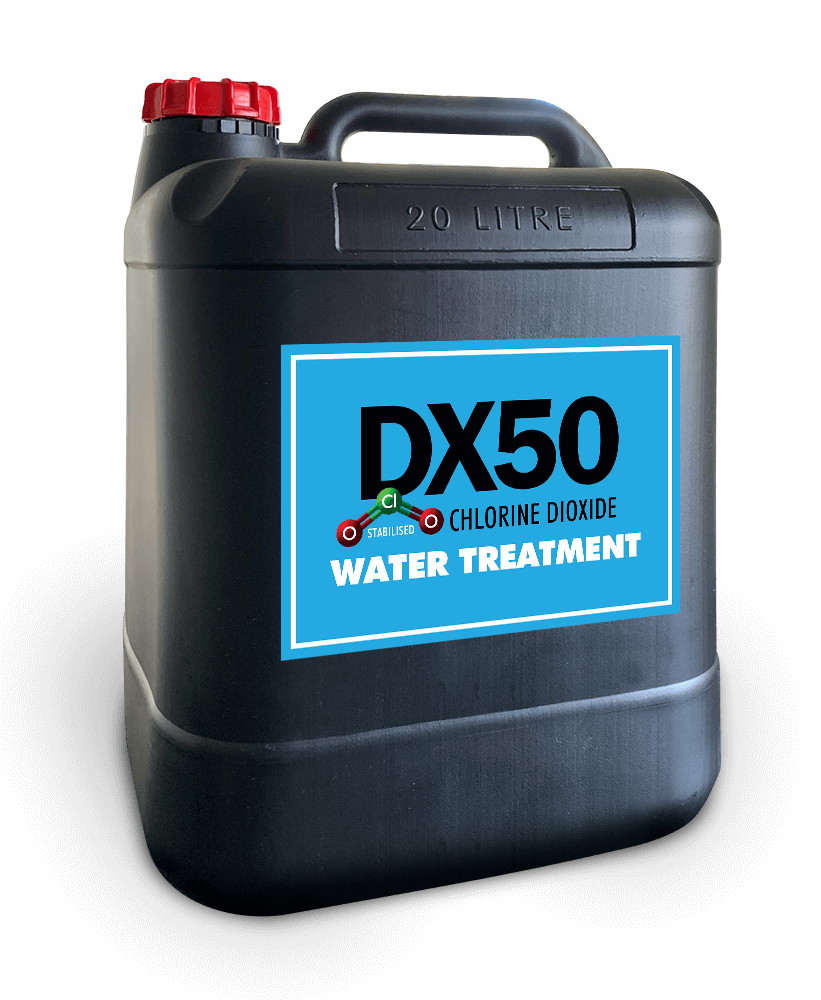
An Eco-Friendlier Approach to Fighting Fungal Disease
Share
An Eco-Friendlier Approach to Fighting Fungal Disease

Fungal diseases are a constant challenge for both growers and plant enthusiasts. They spread easily and can quickly devastate plants and garden crops. From Fire Blight in orchards to Botrytis mould spoiling fruits and flowers, growers have an endless battle against these destructive pathogens.
Traditional chemical fungicides can be effective, but they can come with substantial environmental and health risks. Concerns about their impact on long-term soil health are driving growers to seek safer, more sustainable solutions.
This article explores the drawbacks of traditional fungicides and introduces an eco-friendlier, sustainable alternative: Southwell Fungicide AC.
Balancing Productivity and Environmental Responsibility

One of the biggest challenges for growers is protecting plants and crops from disease without damaging the environment they grow in. Balancing the impacts of disease prevention while taking care not to harm the environment is complicated. If growers are not careful, too much of one fungicide can cause long-term impact to beneficial organisms, soil health, and water quality. Adding insult to injury, fungicide-resistant strains are increasing making disease management even more difficult.
Many home gardeners and commercial growers still rely on traditional fungicides like copper-based sprays, sulphur, and propiconazole to fight fungal diseases such as Botrytis (grey mould), Red Thread in lawns, and Fire Blight in fruit trees. These treatments can be effective, but they also have some concerning downsides:
Copper-Based Fungicides:

Commonly used for fungal and bacterial diseases like Fire Blight, copper-based fungicides can accumulate in the soil, leading to toxicity that harms beneficial microbes and plant roots. High copper levels can also be toxic to bees and other beneficial insects, and repeated exposure has been linked to health concerns in humans.
Sulphur-Based Fungicides: Effective against many fungal diseases, sulphur-based fungicides can be phytotoxic in hot weather and harm beneficial insects, including pollinators. In agriculture, excess sulphur in soils and aquatic ecosystems can cause detrimental ecological and biogeochemical consequences, including soil base cation depletion, surface water acidification, hydrogen sulphide toxicity, and increased production of methyl mercury. Sulphur dust can also cause respiratory irritation in humans without proper protection.
 Propiconazole (a systemic fungicide): Often used for turfgrass diseases like Red Thread, propiconazole lingers in plant tissues and the environment, raising concerns about long-term ecological effects. It is classified as a possible human carcinogen and may pose risks to aquatic organisms if runoff enters waterways.
Propiconazole (a systemic fungicide): Often used for turfgrass diseases like Red Thread, propiconazole lingers in plant tissues and the environment, raising concerns about long-term ecological effects. It is classified as a possible human carcinogen and may pose risks to aquatic organisms if runoff enters waterways.
Chlorothalonil (a synthetic fungicide): A broad-spectrum fungicide for crops like potatoes and vegetables, chlorothalonil's persistence can disrupt soil microbial communities, reducing beneficial bacteria and fungi that support plant health. This disruption can decrease soil fertility and resilience, increasing reliance on chemical inputs for disease control. Chlorothalonil is also toxic to aquatic life. The U.S.
classifies it as "likely to be carcinogenic to humans," with studies indicating an increased incidence of kidney tumours in animals exposed to the chemical.
A Greener Option for Fungal Control

Balancing effective crop protection with environmental responsibility is challenging. However, chlorine dioxide-based fungicides, including Southwell Fungicide AC, offer an effective and safer alternative. Unlike copper and sulphur, Southwell Fungicide AC does not accumulate in soil, preventing long-term toxicity. It rapidly oxidizes fungal and bacterial pathogens, proving highly effective against Botrytis, Red Thread, and the difficult-to-control Fire Blight.
Chlorine dioxide is gaining recognition as a viable alternative to traditional chemical fungicides. Commonly used in water purification and food sanitation, research studies confirm its effectiveness against fungi and its benefits for plant health. This compound effectively combats a wide range of fungal diseases, including fire blight in apple and pear orchards, botrytis (grey mould) in various plants, red thread in lawns, and many more.
What is Chlorine Dioxide and how does it Work?

Despite its name, chlorine dioxide is distinct from chlorine; they are different compounds with unique reactions (read more). Chlorine dioxide is a powerful oxidising agent with broad-spectrum antimicrobial properties. It disrupts pathogen cell walls, preventing adaptation and survival, without leaving harmful chemical residues, a common issue with traditional fungicides that leads to resistance.
Because it largely breaks down into water and oxygen, chlorine dioxide controls disease without harming beneficial soil microbes or causing resistance issues. It also minimizes risks to pollinators and other beneficial insects and leaves no harmful residues that could affect human health, making it a sustainable and safer solution for disease control in gardens and farms.
Key differences between chlorine dioxide and traditional fungicides include:
- It breaks down into harmless substances like water, oxygen, Chlorite and Chloride, minimizing environmental impact.
- It rapidly targets and kills fungi, inhibiting the development of pathogen resistance and ensuring long-term effectiveness.
- Its selective action minimizes harm to beneficial organisms and the surrounding environment.
These characteristics make chlorine dioxide a greener choice for growers. Southwell Fungicide AC is a smart solution for gardeners seeking an eco-friendly and effective way to combat plant diseases.
Research supports CLO2 as an eco-friendlier Fungi Control

Research, including studies in the Journal of Agricultural and Food Chemistry and findings from the Environmental Protection Agency (EPA), supports chlorine dioxide’s reduced environmental impact and its selective action on pathogens, minimizing harm to non-target organisms. This selectivity promotes healthier soil ecosystems and sustainable farming practices. Multiple studies demonstrate chlorine dioxide's effectiveness against harmful pathogens like Botrytis cinerea and Penicillium digitatum when applied as a foliar spray.
A study in the Global Journal of Agricultural Innovation, Research & Development explored chlorine dioxide’s dual role as an antimicrobial agent and a natural plant defence booster. The research found that foliar sprays of chlorine dioxide not only stopped fungal growth on grapevines but also activated the plants’ own immune responses, enhancing resistance to future infections. (Avanti Publishers)

Another study on cucumber plants showed that chlorine dioxide effectively suppressed downy mildew, achieving a 41.2% control rate with a diluted spray. The study also tested thermal fogging, where chlorine dioxide is dispersed as an ultra-fine mist for more thorough plant coverage. This method achieved an 80.9% success rate, highlighting chlorine dioxide’s potential as a powerful and environmentally friendly disease management solution. (ResearchGate)
Chlorine dioxide is also gaining popularity in ornamental plant care due to its ability to kill harmful microbes on contact. Unlike some traditional fungicides, it remains effective across different pH levels, leaves no harmful residues, and works at low concentrations—making it a safer choice for both plant production and water treatment.
Ongoing research continues to support chlorine dioxide’s effectiveness against various plant diseases, including powdery mildew, anthracnose, and post-harvest pathogens. As more growers adopt sustainable solutions, chlorine dioxide is emerging as a reliable and responsible option for plant protection.
How to Apply Southwell Fungicide AC
Southwell Fungicide AC is particularly effective against a wide range of fungal diseases, including powdery mildew, botrytis, buxus blight, and fire blight. It is easy to apply and highly effective when used correctly. Simply refer to the dosage table, dilute the appropriate amount with water in your sprayer, and apply a fine mist, to the point of run off, over the affected plants, ensuring thorough coverage of affected foliage and surrounding soil.

For best results, apply Southwell Fungicide AC during cooler hours, such as early morning or late evening, to minimise degradation from sunlight and maximise its effectiveness.
Regular applications may be necessary, especially in humid or rainy conditions when fungal diseases are most prevalent. Frequent application won’t leave toxic residues in the soil or on plants, nor will it harm you or your pets, as Southwell Fungicide AC breaks down into harmless byproducts after killing the fungi. This makes it an attractive option for both home gardeners and commercial growers, particularly those seeking to maintain organic or eco-conscious practices.
- Lawn Diseases (e.g., Red Thread, Brown Spot): Apply as a fine spray after scarifying the lawn to remove debris. Repeat every 7–14 days during active fungal outbreaks or as a preventive measure during wet seasons. Ratio 1:25
- Botrytis and Other Plant Fungi: Spray directly on affected foliage and surrounding soil. Reapply weekly or after heavy rain to maintain protection. Ratio 1:50 – 1:100
- Buxus Blight: Treat both the foliage and soil underneath hedges. Applications every 10–14 days help ensure thorough control and promote healthy regrowth. Ratio 1:25
- Fire Blight: Use as a foliar spray at the first sign of infection. Repeat every 7 days during periods of high risk or until symptoms subside. Ratio 1:50 – 1:100
What Customers say about Southwell Fungicide AC
Many gardeners have reported significant success using Southwell Fungicide AC chlorine dioxide treatments (all reviews can be found on our review page):

- Faizal M. treated his apple trees affected by fire blight with a 50:1 dilution of Southwell AC Fungicide before sunrise or on cloudy days. He said within weeks, the disease had disappeared, and the trees showed no signs of reinfection.
-
Noel B. wrote that Southwell Fungicide AC cleared his lawn of red thread in just three days. He praised its effectiveness and cost-efficiency and added that he also saw a marked improvement in his roses and shrubs after he treated them with Southwell fungicide AC.

- Steve H., a lawn care enthusiast, shared, "I used this fungicide after scarifying my lawn, and it really seems to be working. It's a much more effective and economical solution compared to some of the smaller, more expensive options."
- Merv F., a fruit grower, reported, "I'm very pleased with how well it controlled the botrytis on my fruit trees. It completely stopped the spread and has prevented any further outbreaks so far."
-
C.J.B., a gardener, found Southwell Fungicide AC to be particularly effective against buxus blight: "I used it on my boxwood hedge and also sprayed the surrounding soil. It's really helped the hedge recover with new growth in the previously affected areas."

- Ross E., noted in his review, “You don’t need a handler’s certificate for this. Southwell Fungicide AC helped dry up the botrytis in our flowers.”
Others have reported similar success stories, including eliminating botrytis from plants and managing fungal issues in greenhouses.
The Future of Sustainable Plant Care
With fungal diseases becoming increasingly challenging due to changing climate conditions and evolving plant pathogens, gardeners need solutions that are both effective and sustainable. Formulated with chlorine dioxide, Southwell Fungicide AC offers an eco-friendly and effective solution for gardeners and commercial growers. Its unique oxidative mechanism ensures minimal environmental impact, breaking down into harmless byproducts and reducing the risk of fungal resistance. It is not considered as a Dangerous Goods.

This unique process represents a significant step forward in plant disease management, offering a science-backed alternative to traditional chemical fungicides.
Whether you're dealing with persistent mould, fungal infections in fruit trees, or soil-borne pathogens, Southwell Fungicide AC chlorine dioxide provides a reliable, environmentally responsible solution. With its ease of use and safety profile, Southwell Fungicide AC stands out as a reliable choice for those seeking to balance productivity with environmental responsibility.
By integrating Southwell Fungicide AC into your gardening routine, you can protect your plants, preserve soil health, and contribute to a more sustainable approach to plant care.








